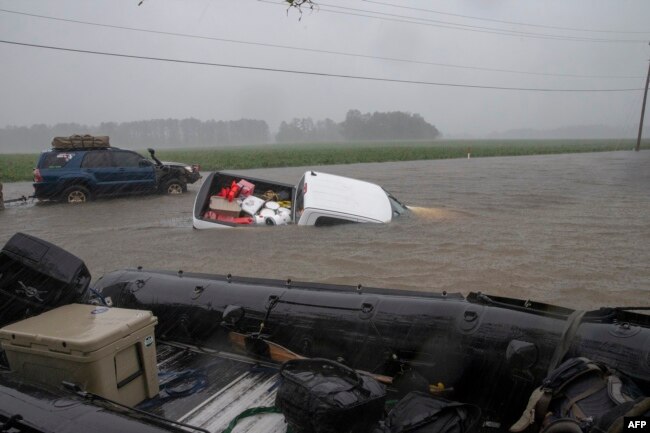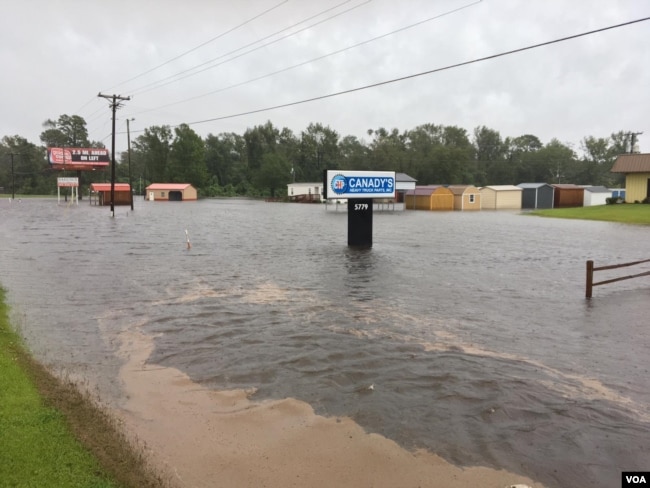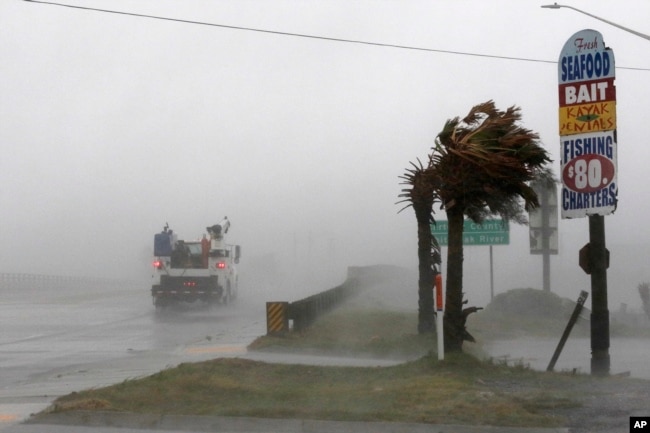
North Carolina Governor Warns of Risk to Life from Remnants of Hurricane Florence
VOA News
North Carolina Governor Roy Cooper says the risk to life is «rising with the angry waters» as what is left of Hurricane Florence dumps tons of rain across the state.
«Wherever you live in North Carolina, be alert for sudden flash floods. Pay attention to the weather warnings and be ready to head for safer ground if you’re asked to evacuate,» Cooper warned residents during Sunday news conference.
«Never drive through flooded roads. Just a few inches (centimeters) of water can wash your car away. And that is already happening out there.»
Florence is now a tropical depression, but continues to dump buckets of rain on parts of the southeastern United States as it slowly creeps toward the mid-Atlantic.
At least 16 people have been killed. Entire towns are completely cut off by floodwaters. Major highways are covered and more than 700,000 homes have no power. Many parts of North Carolina are under a tornado watch.
Top sustained winds are still a brisk 55 kilometers and one meteorologist says Florence is «still a catastrophic, life-threatening storm.»
Federal Emergency Management Agency administrator Brock Long told Fox News Sunday «This is going to be a long, frustrating event» for those who have lost their homes or face substantial damage when they eventually are able to return.
It said the storm will continue to «produce heavy and excessive rainfall,» endangering towns and cities in its path.
One of the hardest hit cities in North Carolina was New Bern, a riverfront city not far from the coastline. Mayor Dana Outlaw said the city, hit by a three-meter storm surge at the height of the storm on Friday, has 4,200 damaged homes.
Across North Carolina, 26,000 people were being housed in 157 shelters after escaping their homes in advance of the flood waters.
The White House said President Donald Trump would visit the storm-ravaged region in the coming days, but only after it is determined his arrival would not disrupt continuing rescue and recovery efforts.
The hurricane agency said it expects Florence will dump up to another 25 centimeters of rain on central and western North Carolina, on top of the 38 to 50 centimeters that has already fallen on the region. It said the additional rain will «produce catastrophic flash flooding, prolonged significant river flooding, and an elevated risk for landslides in western North Carolina and far southwest Virginia.»
Further to the south, the weather forecasters are predicting an additional 10 to 15 centimeters of rain to fall in hardest hit area in southeastern North Carolina, where the storm dumped 75 to 100 centimeters of rain after crashing into the state’s coastline on Friday as a Category 1 hurricane.
Because the storm virtually stalled after hitting the shoreline, it has dumped record amounts of rain on the mid-Atlantic region, pulling warm water from the ocean. Storm surges, flash flooding and wind have left a path of destruction, with hundreds of thousands of people unable to return to their homes until floodwaters recede, which is expected to take days in many instances.






